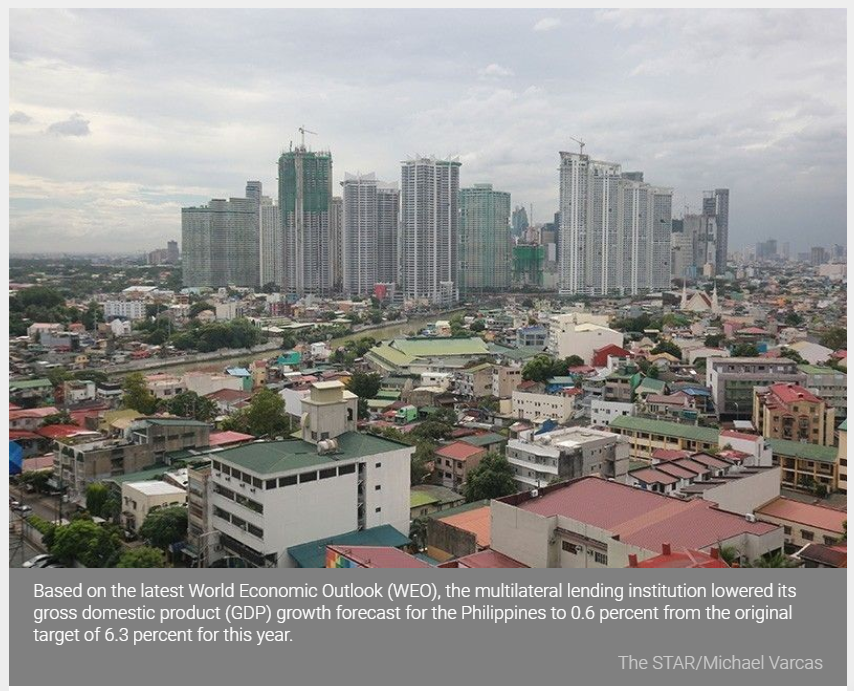IMF slashes Philippines growth outlook to 0.6% this year
MANILA, Philippines — The International Monetary Fund (IMF) has lowered its economic growth forecast for the Philippines for this year, amid the coronavirus disease 2019 or COVID-19 pandemic.
Based on the latest World Economic Outlook (WEO), the multilateral lending institution lowered its gross domestic product (GDP) growth forecast for the Philippines to 0.6 percent from the original target of 6.3 percent for this year.
“The downward revision of the 2020 growth forecast is mostly attributable to supply disruptions related to COVID-19 and weaker demand in the Philippines’ major trading partners,” IMF resident representative to the Philippines Yongzheng Yang said.
He said tighter global financial conditions, weaker public confidence and lower remittances are also expected to weigh on private consumption as well as investments.
Economic activity came to a grinding a halt after Malacañang imposed an enhanced community quarantine in Luzon, encouraging Filipinos to stay at home to prevent the spread of the virus. The quarantine has been extended to April 30.
Economic managers through the Development Budget Coordination Committee (DBCC) penned a GDP growth target of 6.5 to 7.5 percent this year after slowing down to 5.9 percent last year due to soft global markets amid the US-China trade war, the tightening cycle by the Bangko Sentral ng PIlipinas (BSP) in 2018 and the delayed passage of the 2019 national budget.
However, Diokno expects a negative to one percent GDP growth while the National Economic and Development Authority (NEDA) projects a negative 0.6 to 4.5 percent growth for this year.
With the revised projections, the Philippines is still expected to be the second fastest growing economy in ASEAN next to Vietnam’s 2.7 percent. Indonesia is expected to post a GDP growth of 0.5 percent while the economies of Thailand and Malaysia are expected to contract by 6.7 percent and 1.7 percent, respectively.
Yang said the policy support is expected to partially offset the negative impact of COVID-19 in the Philippines.
“The virus outbreak is assumed to peak in the second quarter of 2020, leading to a gradual recovery in the second half of the year,” Yang said.
For 2021, Yang said the IMF expects a strong recovery with the GDP expanding by 7.6 percent.
“Growth is projected to rebound to 7.6 percent in 2021 from a low 2020 base,” he said.
Likewise, the multilateral lender sees inflation easing to 1.7 percent this year from 2.5 percent last year before picking up to 2.9 percent in 2021. The BSP has set an inflation target of two to four percent.
“The lower inflation forecast for 2020 mainly reflects an expected decline in international commodity prices and a relatively stable exchange rate. Weaker private consumption and investment will also help ease inflationary pressures,” Yang said.
IMF expects the country’s unemployment rate to rise to 6.2 percent this year before declining to 5.3 percent in 2021 from 5.1 percent last year.
“We welcome the authorities’ fiscal and monetary responses to the impact of COVID-19. Owing to prudent macroeconomic management, the Philippines has built considerable policy buffers in recent years, and both the government and the BSP have been making good use of this policy space,” Yang said.
Source: https://www.philstar.com/business/2020/04/15/2007334/imf-slashes-philippine-growth-outlook-06-year


 Thailand
Thailand




